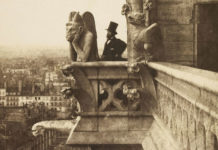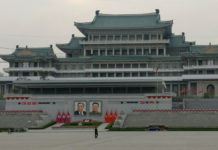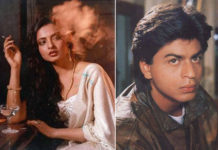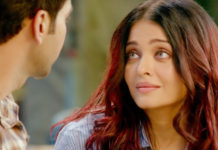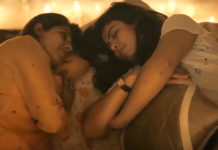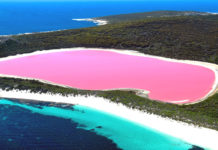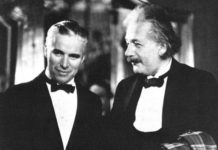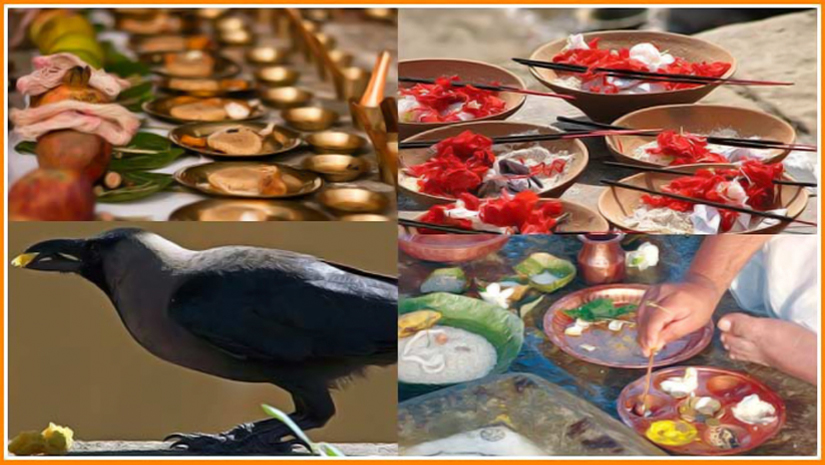Bajirao and Mastani’s love story is widely known in Maharashtra. Peshwa Bajirao I, the greatest leader of the Maratha empire after Shivaji, married Mastani, the daughter of Bundela king and an Iranian woman, in the face of family opposition, imprisonment and crippling orthodoxy.
Bajirao was a Chitpavan Brahmin, a clan with a reputation for orthodoxy. Bajirao married an outsider, and worse, someone with a Muslim mother. A likely complication, said Palande-Datar, was that Bajirao’s first wife Kashibai came from a family of Chitpavan Brahmin moneylenders who were the chief funders of the Maratha empire. Bajirao did not have absolute power. Had his in-laws exercised their clout with the Maratha emperor Shahu Maharaj or with other sardars of the empire, his position as prime minister might no longer have been secure.
Though his family did not accept their relationship, Bajirao evidently fought great social sanctions and political peril to stay with Mastani, and protected her from political reprisal until his death. Whatever their relationship, Bajirao prevailed. Mastani stayed for some time with him in his palace in Shanivarwada in Pune. Later, he shifted her to another palace in Kothrud. His family continued to object. At one point, when Bajirao was away at war, his family confined Mastani to a part of his palace. Nor did they allow Mastani’s son with Bajirao to be raised as a Hindu. As Mastani’s mother was a Muslim, they insisted that her son be raised as one as well.
Bajirao died in battle in 1740. Mastani died soon after in unknown circumstances. After their death, Kashibai took in and raised their son Shamsher. Today, Mastani’s descendants are accepted as a valid, if secondary, bloodline of the Peshwas. In 2012, there were even reports of a historic reconciliation between the two branches of the family.
Sanjay Leela Bhansali’s dream project, Bajirao Mastani has been 10 years in the making and based on the Marathi novel titled Raau by Nagnath S Inamdar was one of the most awaited movies this year and features an ensemble star-cast- Ranveer Singh as Peshwa Bajirao I, Deepika Padhukone as Mastani, Peshwa’s 2nd wife and his true love and Priyanka Chopra as Kashibai, Peshwa’s first wife. Peshwa was one of the Maratha’s greatest warriors and is counted next only to Shivaji.
History and Truths of Bajirao Mastani Holds

History has many descriptions – Something that is lost in time always has a way to return; either in the form of fictional novels or plays written by historian writers. But that one question that haunts everyone is “How much truth does History holds?” History is written by winners and even then it gets distorted over a period of time. So, how much truth does the movie, Bajirao Mastanihas?
Pinga Pinga Song
 Since the film-make released the song, Pinga Pinga, the movie kept surrounding with many controversies and even now when he released the song, Malhari it gave rise to controversies that Peshwa never had time to even eat and drink, let alone dance.
Since the film-make released the song, Pinga Pinga, the movie kept surrounding with many controversies and even now when he released the song, Malhari it gave rise to controversies that Peshwa never had time to even eat and drink, let alone dance.
Now a group of descendants of the Bajirao clan- descendants of first and second wives’ of Bajirao , plan to file a public interest litigation in court requesting to stop the screening mainly because the “women” of those times would never wear revealing nine-yards and dance- which was considered to be humiliating in those times.
Let’s look at various versions of this lost-in-time love story
1. Mastani:
 There also has been varied views on Mastani and her ancestry. Some say she was the daughter of Maharaja Chhatrasal, a Bundela Rajput who founded the state of Panna in Bundelkhand, and his Persian wife Ruhaani Bai and we’re followers of the Pranami sect, a Bhakti sampraday that does not distinguish between caste or religion; She was offered to Peshwa Bajirao as a wife after he helped her father defeat attack from mughals in the year of 1727. She was an ardent devotee of Lord Krishna and used to sing his bhajans in a trance. She kept both fasts and Rozas and also offered namaaz. She was very well accomplished in domestic chores, martial arts, music and dancing and it was her haters who tainted her image as time progressed. After her marriage to Bajirao, the dowry given to him, made Bajirao more powerful and wealthier.
There also has been varied views on Mastani and her ancestry. Some say she was the daughter of Maharaja Chhatrasal, a Bundela Rajput who founded the state of Panna in Bundelkhand, and his Persian wife Ruhaani Bai and we’re followers of the Pranami sect, a Bhakti sampraday that does not distinguish between caste or religion; She was offered to Peshwa Bajirao as a wife after he helped her father defeat attack from mughals in the year of 1727. She was an ardent devotee of Lord Krishna and used to sing his bhajans in a trance. She kept both fasts and Rozas and also offered namaaz. She was very well accomplished in domestic chores, martial arts, music and dancing and it was her haters who tainted her image as time progressed. After her marriage to Bajirao, the dowry given to him, made Bajirao more powerful and wealthier.
While some say she was a courtesan and Peshwa fought society and his family to get married to her.

2. Kashi bai’s Jealousy:
Kahibai, the first wife of Bajirao, came from a family of Chitpavan Brahmin money lenders who were the chief founders of the Maratha empire. According to the historians and the decedents, Kashibai and Mastani met only once and that too on a official ground. Kashi bai had arthritis and was a patient of TB, and so her dancing was completely not possible- moreover the women during those times, wore a decent clothing with none of their body parts visible. – So the attire and the even the song- PingaPinga was not acceptable and caused an uproar in the peshwa community. Kashi bai, was never jealous of Mastani and was one of the important advisors of PeshwaBajirao in his administrative policies.
But, the fictionalized version of the life-history of Kashibai shows that she started getting jealous of Mastani after the death of her son when Bajirao started giving Mastani more importance and love. Further, Bajirao’s mother started filling poison against Mastani and Kashibai and her Mother-in-law tried killing Mastani’s son on several occasions and failed- due to which Kashibai was under house arrest under the orders of Peshwa Bajirao’s elder brother. – Historians have a differentiated opinion on this, but one thing is clear- Kashibai took in Mastani’s son and started bringing up him as her own after the death of Bajirao and Mastani.
3. Bajirao-Mastani’s Relation
The only account of Bajirao and Mastani’s love story that history gives us is that she is Bajirao’s second wife and albeit his true love.
But, whatever their relationship is Bajirao prevailed that Mastani stay for some time with him in his palace in Shanivarwada in Pune. But later, he shifted her to another palace in Kothrud.
Although his family continued to object. They did not allow Mastani’s son with Bajirao to be raised as a Hindu because Mastani’s mother was a Muslim, they insisted that her son be raised a muslim as well. The history only gives us their existence, but the authors of 20th century gave us their biographies- So the historical account is distorted.
4. Bajirao and Mastani’s death:
Soon after Bajirao died in a battle in 1740, Mastani died under mysterious circumstances – some say she committed Sati by poisoning herself while some say she died of emotional trauma.
Mastani Lake- Where Mastani is said to have died.

This was the power of their love for each other. But after their death, Kashibai took in their son, Shamsher and raised him.
Mastani Grave.

Fiction or not, Truth or False is all secondary to the love Bajirao and Mastani had for each other- perhaps their love even truer than the historians distorted description of them. Their hearts did beat for each other.
The controversies that surround the movie are objections for the songs- pinga pinga and Malhari. The demands of the decedents are clear- they want Bhansali must remove Pinga and Malhari from the film and the film must be shown to Bajirao’s descendants and they have also offered to bear the costs of these changes to prevent the filmmakers from bearing a loss.
How did this story nurtured!!!
There are two main stories about Bajirao Peshwa.”One is how he was a valiant commander-in-chief. The other is of Mastani. With this story, there clearly is fascination in the Maharashtrian crowd about this Iranian beauty who comes to medieval Pune of orthodox sensibilities.”
This interest began in the 1890s, more than a century and a half after they had died, when Marathi playwrights began to write a series of nationalistic plays based on historical figures, notes historian Prachi Deshpande in her book Creative Pasts: Historical Memory and Identity in Western India, 1700-1960. The first such play that portrayed them as a couple was Bajirao-Mastani by NB Kanitkar, written in 1892.
The 1890s were also a time of much fervid nationalism. Just a year after Kanitkar’s play was released, Bal Gangadhar Tilak introduced the first Sarvajanik Ganesh Festival in 1893 to unite Hindu sentiment against foreigners.
That decade saw historical plays based on the lives of Shivaji, his son Sambhaji, military leader Tanaji Malusare and other assorted characters drawn from the 200 years of Maharashtrian history after the decline of the Deccan Sultanates and until the last embattled Peshwa sought refuge with the British. The sources of these plays were bhakhars and powadas, ballads composed in elaborate praise of the deeds of Maratha leaders often at the time they were alive.
Kanitkar’s Bajirao Mastani, however, set a different trend. Even as it played up religious and nationalistic tropes, it was also undeniably a love story. Plays that followed Kanitkar’s adopted similar tones and by the 1930s, the story of Bajirao and Mastani was as familiar to Marathi audiences as that of other epic romances. A slew of historical novels beginning in the 1930s also added to the myth-making.
In their hands, Mastani grew out of being one of history’s many ciphers into a brave woman passionately devoted to her husband, an accomplished horse rider who accompanied her husband into battle and someone who fought tooth and nail to protect their son from forces out to kill them.
It helped that Bajirao was as renowned for his beauty as Mastani. Bajirao, Sahasrabudhe said, was widely lauded as not just handsome, but beautiful.
“There is a story that when he went to visit the Nizam in Hyderabad, the Nizam’s queens showered pearls on him because he was so beautiful,” she said. This fable became a plot point in ETV’s television series Shrimant Peshwa Bajirao Mastani, which aired in 2010.
Article few portions are courtesy of Scroll.in – By: Archa Dave


